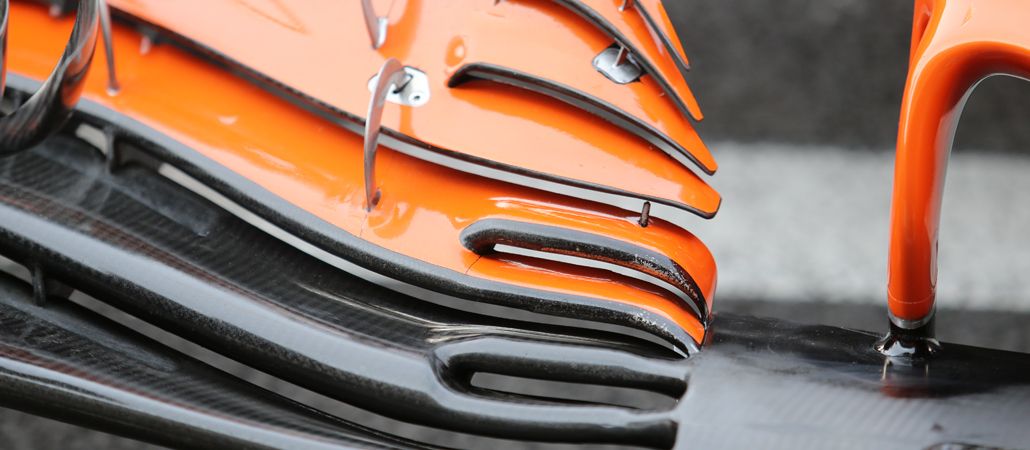McLAREN ALREADY PREPARING 2018
In Mexico, Fernando Alonso’s McLaren MCL32 was fitted with the new front wing specification that had been introduced a week earlier in the US. The update features a pair of slits on the inner section of the wing (see white and blue arrows), in the area where the all-important Y250 vortex is generated, stemming from the pressure differential between the edge of the neutral section (located 250mm away from the car’s longitudinal axis on both sides) and the remainder of the wing. F1 aerodynamicists are keen to use the vortex’ energy to push the dirty wake of the rotating front wheels and optimise how the air flows around the sidepods.
Adding the cuts is likely to result in a decrease in pressure differential, which in turn would weaken the Y250 vortex. What is McLaren trying to achieve there? There might be a couple of reasons as to why chief technical officer Peter Prodromou and his team have been willing to explore this avenue with next year’s McLaren challenger in mind.

First, one will remember that the Woking-based outfit introduced in Sepang a new bargeboard fitted with an extra triangular vane. It is believed that the new element helps push away the turbulent air of the front wheels in a more efficient manner. That way, it can accommodate a less powerful Y250 vortex. What is the rationale there? As useful as it is, the vortex also produces drag. Therefore, reducing the force of the vortex without hurting airflow circulation around the sidepods leads to better car aerodynamics overall.
Secondly, the arches on the outer area of the front wing have been split into several elements (see yellow arrows), in the spirit of Mercedes’ aero philosophy of segmentation. This arched section produces a powerful vortex that drives away the turbulent air coming off the front tyres so the rear of the car can be fed with cleaner air, which boosts the efficiency of the diffuser. If the outer arches generate a healthy vortex, the Y250 one does not need to be as potent.
It is worth noting that sampling technical evolutions in the latter stages of a Formula 1 season usually serves to assess concepts that could potentially be applied on the following campaign.

 '
'



